For just about as long as there have been cave dungeons, there have been people complaining that everyone does them wrong – that caves pose their own unique natural hazards and challenges, and that they’re way more interesting than 10′ corridors.
…and now I’m going to join them. Here I’m going to talk about (mostly) natural caverns. Mines and carved architecture deserve their own posts (and may get them, eventually).
One publication that doesn’t get it all wrong is Patrick and Scrap’s Veins of the Earth, which should get you back into caving after you were turned off it by the Dungeoneer’s Survival Guide all those years ago.
Already know all about this? Here, have some maps. Note how the mapper has to deal with bits of cave crossing and recrossing at different heights.
Still want more help?
In brief, the cool things I know about caves are:
1. they’re naturally totally dark BUT can have really, really long sight lines, so one sniper with infravision should be able to hold a whole underground river complex.
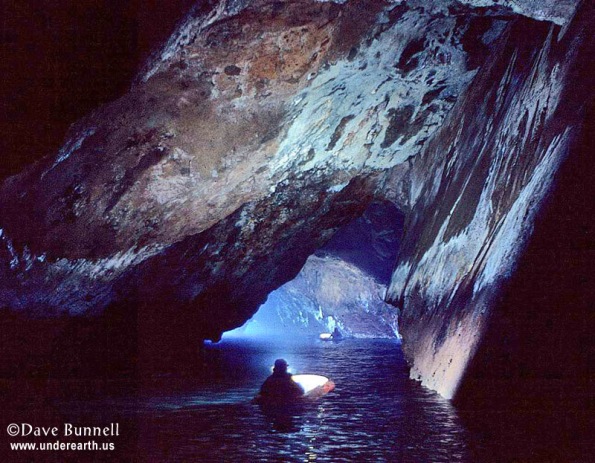
Except;
2. they tend to be really complex, ruffled, full of stalactites and overhangs and slippery bits and uneven floor, so you can probably hide a battalion in one and advance in little scurries and jumps.
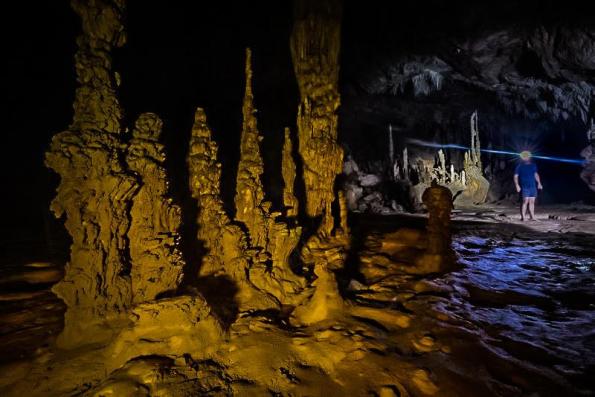
So your lone sniper had better have a back door out, because a determined assault will always get them.
Except;
3. they’re full of surprise hidey-holes, some of which are only accessible by climbing up sheer cliffs or going underwater.
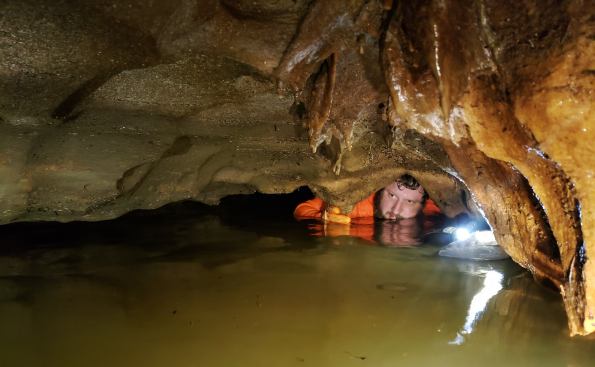
Oh yeah, right: many, many caves have interesting water features, like rivers and flash flooding, and constant drip-drip-dripping from aquifers closer to the surface, which in theory you might think you could trace to the surface, but they’re completely treacherous, because the water takes weird snaky paths to get to you, which might actually delay it by a few centuries on the way down.
(oh yeah and: cave diving is about as dangerous as skydiving while firefighting in a phone box.)
So water (or other fluid) keeps the air pockets of cave chambers separate, so those chambers can be filled with choking smoke or depleted of oxygen or contain pockets of poison gas.
And you think you’ve got to the deepest point but then;
4. they’re prone to suddenly opening out into giant cathedral chambers where a whole city can hide and you wonder why the soaring ceiling hasn’t opened up to the sky in a sinkhole yet.
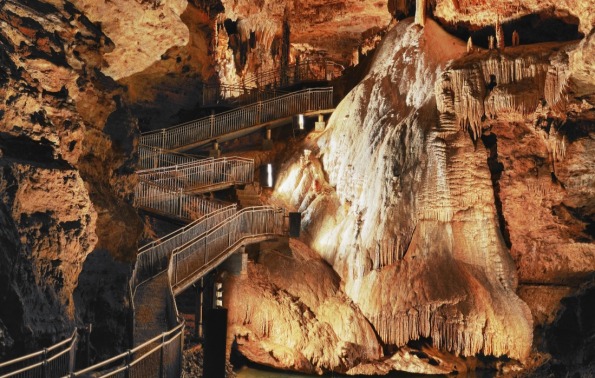
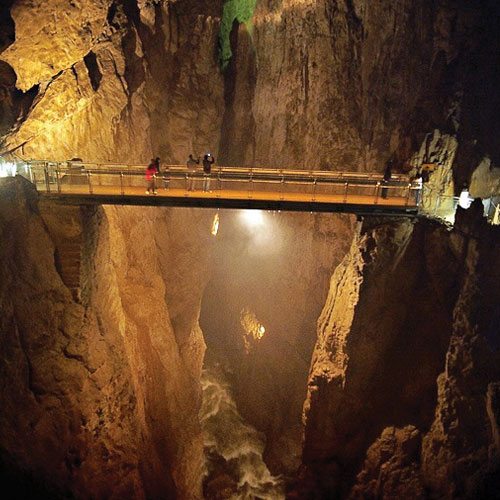
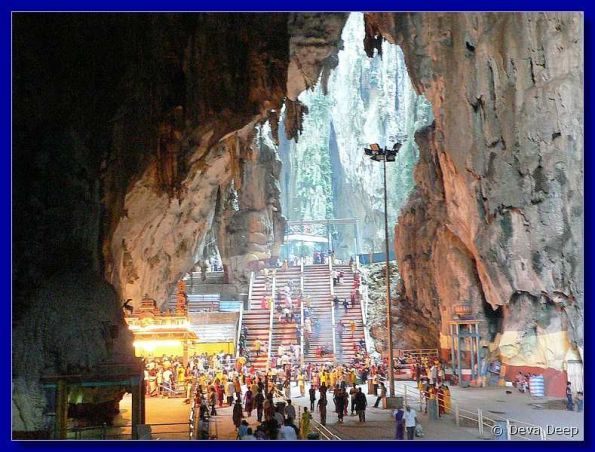
And you also wonder how all the city-builders found this subterranean flask-hole, because you wouldn’t have stumbled across it (and nearly died getting in) if you hadn’t been pursued by armies of ninja goblins (or in my case been taken in by a tourist guide).
All this is because most big caves happen in karst country – where the local rock is a mix of limestone and something harder, but then water erosion strips the limestone out, leaving behind wild bubble and flask caverns, connected by narrow, twisty passages.
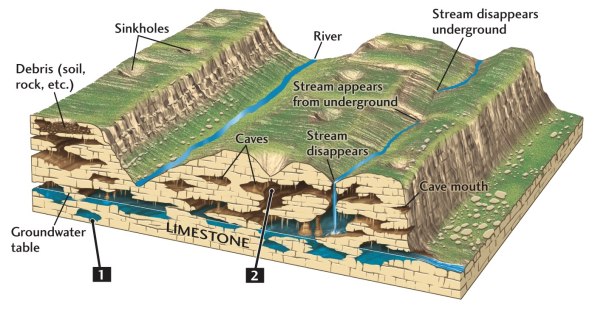
Natural karst tends to happen in limestone but it could occur anywhere you have mixed domains of hard and soft material – take the alternating layers of cooled lava and volcanic ash in Cappadocia, for example, where little chips remaining from a thin layer of basalt protect the soft tufa underneath them from being washed away in the rain:
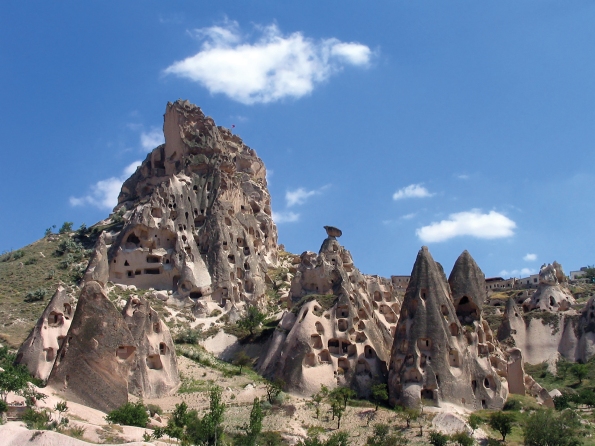
(The great thing about ash is that you can carve it easily, so now you have rabbit warrens scooped out in your cave country. The bad thing about it is, once you’ve carved it, water can get in and then freeze in winter, forcing cracks and collapses. Which, for spontaneous opening of ancient dungeons, is kind of promising.)
…or what about post-apocalyptic deserts, where diggable sand and branching qanats lurk under the blasted, glassy surface?
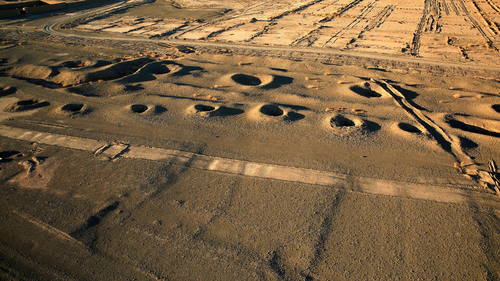
Here are some things everyone should be doing with caves:
– underwater rivers mean underwater boats, which you row or punt. Being in a boat means being vulnerable to missile fire.
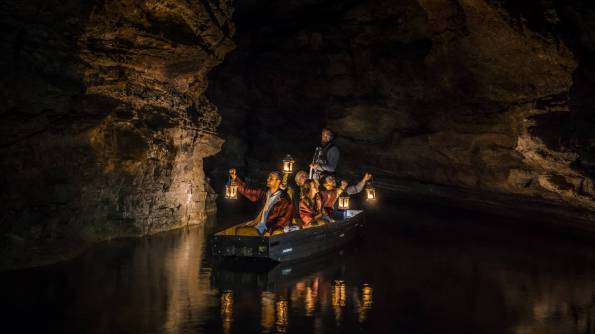
If they’re kayaks, you can totally roll them over and keep going through totally submerged passages, rolling back up where the ceiling allows.
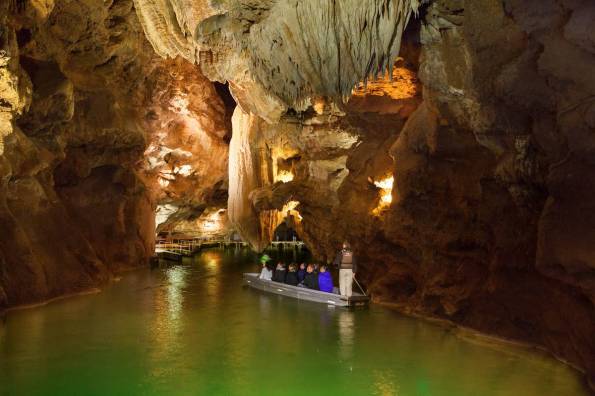
(There’s a Sindbad story about this, where he comes up miles away from where he went into the cave, having followed an aquifer. It’s a one-way journey: the current is way too strong and the underwater passages too long to even think about trying to swim back.)
– narrow squeezes and swimming mean taking off your armor. All the best caves have rivers, every big cave has had cave-ins. I have been through a gap in the ATM cave in Belize where the only way to pass was to squeeze your neck through the narrow point between two fallen rocks, and to rotate your torso as you did so. I remember thinking “I don’t think there’s any way to get a breastplate in here.” And on the other side, the cave carried on for 5 miles, including a couple of caverns full of sacrifices of clay pots and a few bodies. So somebody managed to drag stuff in there.
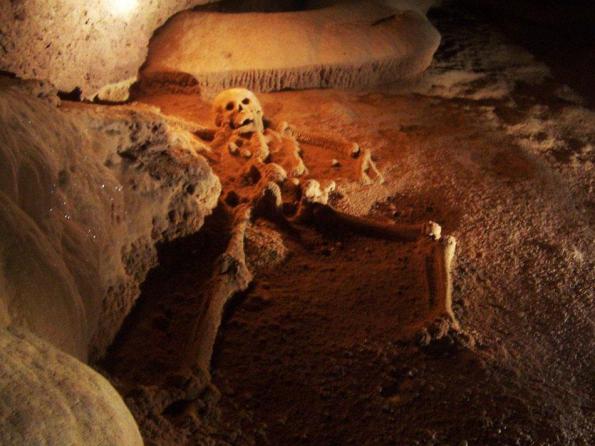
– climbing after the swimming means soft or no shoes, to feel your way along narrow ledges. Even if you want to stick to the “floor” of a karst cave, you’ll probably do a lot of climbing. Floors tend to be littered with giant boulders from old cave-ins, or covered in shallow pools of chalky water that could be hiding anything, and cavern chambers are fairly often inconveniently placed at the top of exhaustingly long, ridiculously steep, glass-slippery stone slides with water running down them.
Here’s where you deal with the whole “how much equipment do I have?” question. The answer is: as much as you can swim and climb up slippery cliffs in. Whenever you’re in water, remember that the floor could disappear at any moment (karst bubble chambers, right? Also loose rocks wind up in the rivers, so footing is unreliable) so you’d better be buoyant.
The more detailed answer is: sure, by all means bring a load of equipment with you, in waterproof backpacks that float, with loads of rope and torches, and have the whole team relay that luggage to safe points and set up camps after every serious squeeze. Map and hammer in guide ropes and do all the professional taming of the underworld you can. But also remember, you may be under fire, and big cave systems can follow rivers for 30 miles or more underground, so torch longevity is a real issue. You probably want to be thinking about extending your overall exploration by like a mile a day, then retreating to camp, and maintaining constant supply lines to the surface. 20 people should be enough if you don’t meet serious resistance. Actually, now I’m excited about running a game of slow exploration and fast retreats: first you spend a load of time really understanding and preparing the ground, then you get chased back over it at breakneck speed, using routes you yourself built: the players are apprentices in an alien environment but masters of their own constructions.
– caves can be full of environmental treasure. Delicate spindly stalactites are beautiful, take millions of years to form, and are made out of minerals carried by water (or other solvents) from the inaccessible rock all around, so they tend to store up stuff gathered from the surroundings. Like for example magical essence from the demon killed centuries ago, or traces of rare isotopes from before The Fall.
 Big stalactites are also great cover. And if you have no respect for strange aeons, you can saw through them to look at deep time and figure out the valley you’re in is a ticking time bomb of volcanic activity or something.
Big stalactites are also great cover. And if you have no respect for strange aeons, you can saw through them to look at deep time and figure out the valley you’re in is a ticking time bomb of volcanic activity or something.
And unrestricted time + slow drying out can lead to some insane crystal formations:
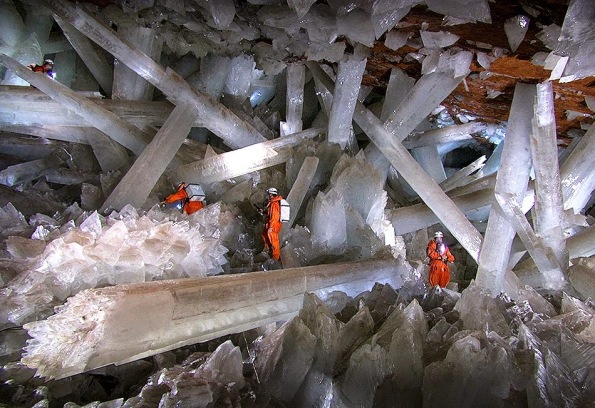
(note: crystals tend to be strikingly pretty, valuable, and sacred. Their regular structures mean they also tend to resonate when struck. ……..rock music)
As for life, you don’t need me to tell you about exciting subterranean fungus colonies or slime molds or blind fish or bats, but what about olms and 200-year-old salamanders – creatures that time forgot? Because….
– caves are time capsules. Stuff in them tends lie out of the sight of man for centuries. Sacred texts, richly-appointed burials, sacrifices, statues, murals, dragon eggs. During those centuries, treasures are liable to get incorporated into the floor, as the cave floods and drains periodically, bringing minerals that crystallize as the waters subside. You may need a pick-axe. And regular deghosting.

– caves are mostly too complex, too stressful, and too secretive to be mapped on any convenient time scale.
“But Richard,” you whine, “my players want to map! On squared paper. That’s why we mostly do dungeons with 60′ corridors.”
Just don’t. Stay with me here – use different language. It’s not true to the experience of caving to say “the chamber is 60′ by 40′ with a 20′ ceiling, exits to the north, south and northeast.” NO. The cave is actually a completely mysterious space, wider than you could throw a shoe, full of interrupting, scalloped columns and silty pools, with a ceiling that’s mostly dark but has some glistening patches in it. You can see the river runs forward (no compass) and there’s a branching passage off to the right, but getting up into it means finding a path up 12′ or so of smooth rock surface, or trying to climb up a shallow but sharp-looking rock ridge, right round the edge of the cavern. Dark patches on the other side of the river might be entrances to other passages or just shadows cast by fallen rocks. You wanna trace your way back out of here? Bring a long ball of string with you.
Treat the cave as a point crawl or circuit diagram, with chambers connected by lines, and do what explorers did before the last few decades – just give the chambers evocative names, so the players tell them apart by reputation – Dead Drop, the Chimney, the Cathedral. Play on associative memory – a raised space in the middle of the Cathedral is obviously the Altar.
In short, go climb around some caves. There’s really no substitute for personal experience here (a two-edged sword, because if you do go caving, forever afterwards you’ll be saying yeah, words can’t really do it justice…). If you possibly can, it’s totally worth visiting even one big cave complex.
Sac Actun near the Mayan city of Tulun in south Mexico is completely flooded nowadays, but the maps are still worth your time, whether you want to fill it with Deep Ones/Yuan Ti or drain it and use it as a “straightforward” dungeon.
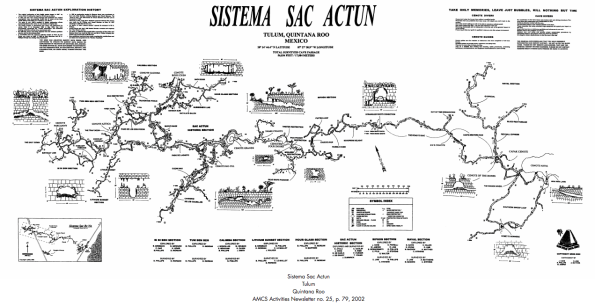
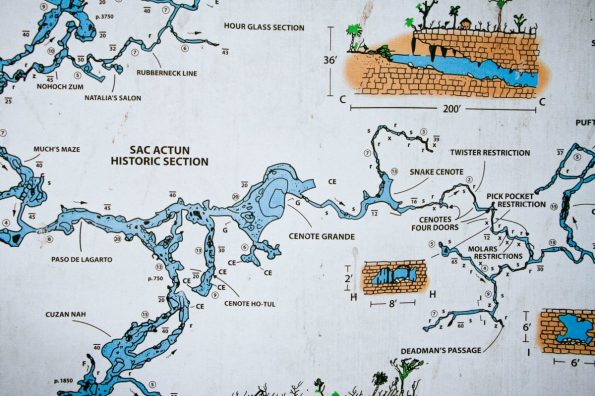
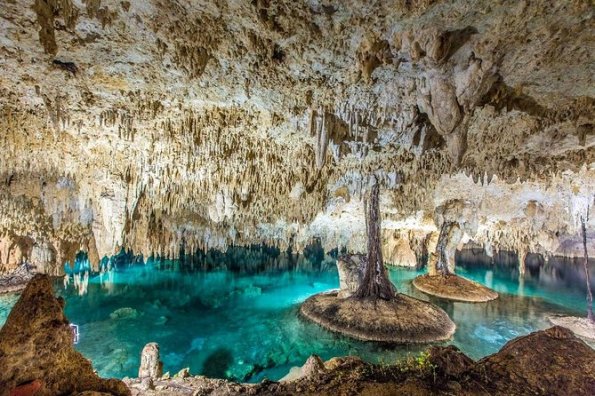 …yes, it actually is that blue.
…yes, it actually is that blue.
Actun Tunichil Muknal cave in Belize provided many of the photos in this post. The entrances, one above the other with a colony of bats, are waiting to be used for an Indiana Jones location shot:
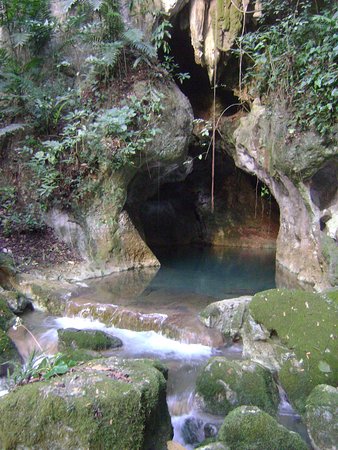
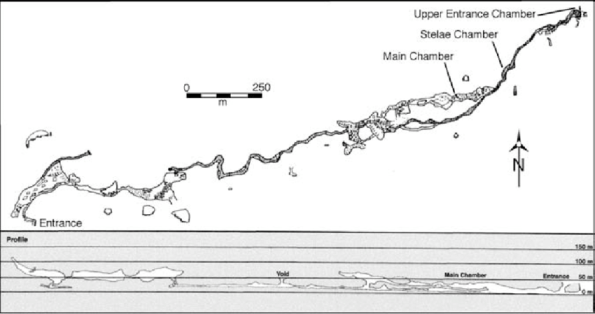
Gouffre de Paridac, which I’ve already mentioned, is in the south of France. And if you’ve been putting off going to the south of France for any reason other than lack of money, I just have to ask why?:
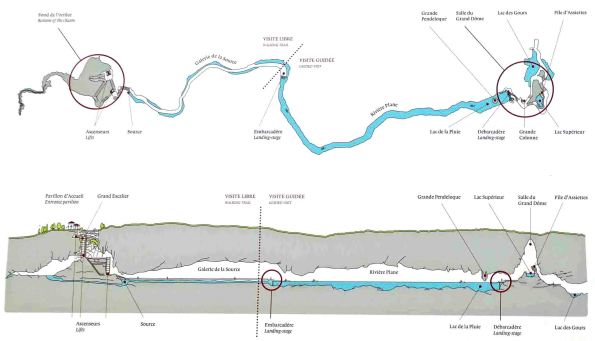
Closer to home for USians, obviously you know about Carlsbad Caverns in New Mexico. I hear Missouri also has a wealth of caves to explore. And I learned about NY’s Howe Caverns while writing this post. In Britain, I hear Yorkshire and the Peak District have good caves. I’m more familiar with the Cheddar Showcaves and Wookey Hole, which are worth a look, even if they’re pretty small potatoes (and really touristy. Like, cheesy not just because of the cheddar) compared with France’s riches:
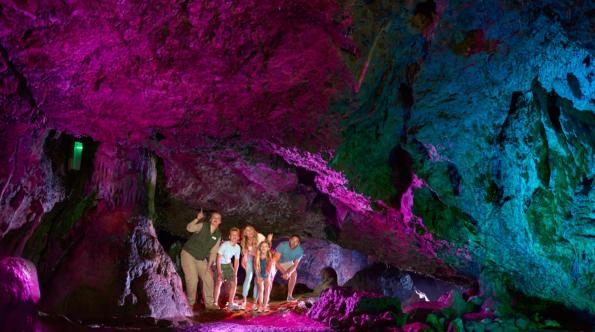
 …and never again treat a cave like a wobbly-walled corner of the dungeon.
…and never again treat a cave like a wobbly-walled corner of the dungeon.
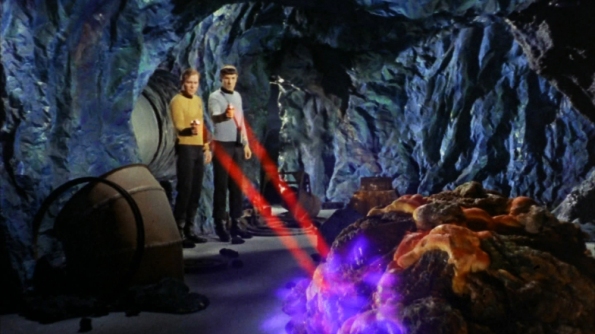
























 Big stalactites are also great cover. And if you have no respect for strange aeons, you can saw through them to look at deep time and figure out the valley you’re in is a ticking time bomb of volcanic activity or something.
Big stalactites are also great cover. And if you have no respect for strange aeons, you can saw through them to look at deep time and figure out the valley you’re in is a ticking time bomb of volcanic activity or something.



 …yes, it actually is that blue.
…yes, it actually is that blue.



 …and never again treat a cave like a wobbly-walled corner of the dungeon.
…and never again treat a cave like a wobbly-walled corner of the dungeon.